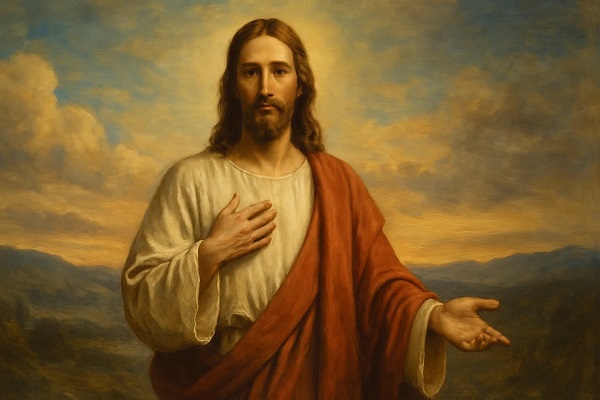How are Methodists different from Presbyterians?
Great question — especially if you’re trying to understand the different streams of Protestant Christianity. While Methodists and Presbyterians both come from the broader Reformation tradition, they differ in history, theology, governance, and spiritual emphasis. Let’s break it down clearly and simply.
🧭 Origins: Two Reform Movements, Different Roots
Presbyterians
- Founded by: John Calvin’s Reformed theology, brought to Scotland by John Knox
- Key moment: The Scottish Reformation (mid-1500s)
- Core influence: Calvinism – especially predestination, the sovereignty of God, and covenant theology
Methodists
- Founded by: John Wesley (with Charles Wesley)
- Key moment: The Methodist Revival in England (1700s), within the Anglican Church
- Core influence: Arminianism – especially free will, personal holiness, and evangelistic zeal
🧠 Theology: Calvinism vs. Arminianism
| Doctrine | Presbyterians (Calvinist) | Methodists (Arminian) |
|---|---|---|
| Predestination | Believe in unconditional election — God chooses who will be saved | Believe in conditional election — God foreknows our choice |
| Free Will | Human will is bound by sin unless God regenerates | Human will is enabled by grace to respond freely |
| Atonement | Limited atonement (Christ died only for the elect – in theory) | Unlimited atonement (Christ died for all, salvation offered freely) |
| Grace | Irresistible grace — those God elects will respond | Resistible grace — humans can reject God’s offer |
| Perseverance | The truly elect will persevere (once saved, always saved) | Salvation can be lost by persistent unbelief or sin |
These differences stem from the Reformed vs. Wesleyan-Arminian theological frameworks.
🏛️ Church Government: Elder Rule vs. Episcopal Rule
Presbyterians
- Governed by elders (presbyters), elected by the congregation
- Authority is shared across local, regional, and national levels
- Key bodies: Session, Presbytery, Synod, General Assembly
Methodists
- Governed by bishops (episcopal system), who oversee districts and pastors
- More top-down structure, though local churches still vote on some matters
- Annual Conferences and General Conferences set doctrine and policy
🙏 Worship and Spiritual Emphases
Presbyterians
- Worship tends to be structured, reverent, and tied to the Word and sacraments
- Emphasis on covenantal theology, the sovereignty of God, and preaching
- Traditionally celebrated only two sacraments: baptism and the Lord’s Supper
Methodists
- Worship is often more expressive, personal, and revival-oriented
- Emphasis on personal conversion, holiness, and social justice
- Also celebrate baptism and communion, but allow more liturgical variety
🕊️ Holiness & Sanctification
One of the most significant spiritual differences is the doctrine of sanctification.
- Presbyterians: Sanctification is the lifelong process of growing in Christlikeness after justification. There is no second blessing or experience of full holiness in this life.
- Methodists (especially Wesleyans): Believe in entire sanctification — a second work of grace where a believer is freed from the power (though not the presence) of sin, enabling a life of perfect love.
This reflects John Wesley’s burning desire not just for conversion, but for holiness of heart and life.
📜 Baptism Differences
- Both baptize infants and adults
- Presbyterians see infant baptism as a sign of covenant inclusion, similar to circumcision
- Methodists see it as a sign of prevenient grace, God’s work before we even believe
Both practice sprinkling or pouring, not immersion (though Methodists may offer immersion in some settings)
💬 Summary Chart
| Category | Presbyterians | Methodists |
|---|---|---|
| Founder | John Knox / John Calvin | John Wesley |
| Theology | Calvinist (Reformed) | Arminian (Wesleyan) |
| View of Salvation | God elects unconditionally | Humans respond freely by grace |
| Sanctification | Gradual, lifelong | May be entire and instantaneous (holiness) |
| Church Structure | Elder-led (Presbyterian) | Bishop-led (Episcopal) |
| Worship Style | Reserved, Word-centered | Emotional, revivalistic |
| Sacraments | Baptism, Lord’s Supper | Baptism, Lord’s Supper |
| View of Baptism | Covenant sign for children of believers | Sign of prevenient grace |
🔍 Why This Still Matters Today
Even today, these differences shape how churches preach, pray, lead, and grow:
- If you attend a Presbyterian church, expect a more structured, theologically tight, elder-governed church with a focus on God’s sovereignty and expositional preaching.
- If you attend a Methodist church, you may experience more varied worship, a focus on personal and social holiness, and preaching that calls people to decisions and transformed lives.
Both traditions contribute richly to the Body of Christ — but they reflect different understandings of how God saves, how grace works, and how the Church is to be led.

